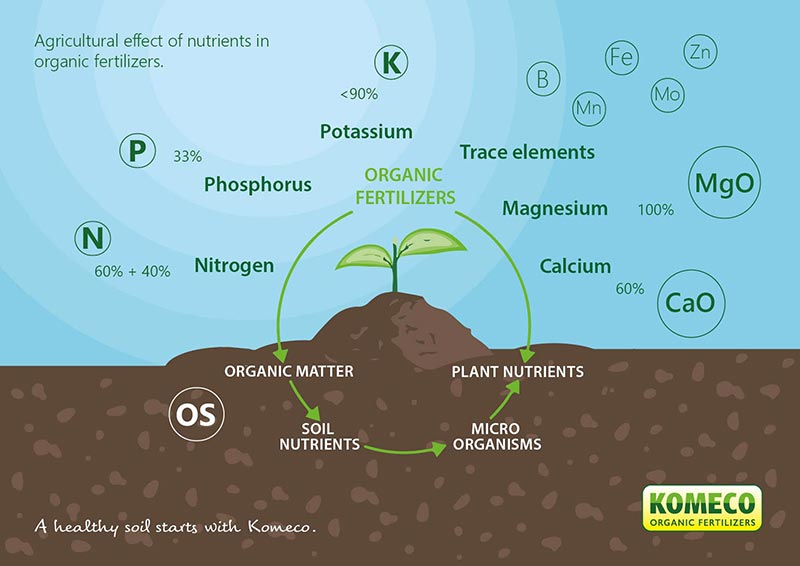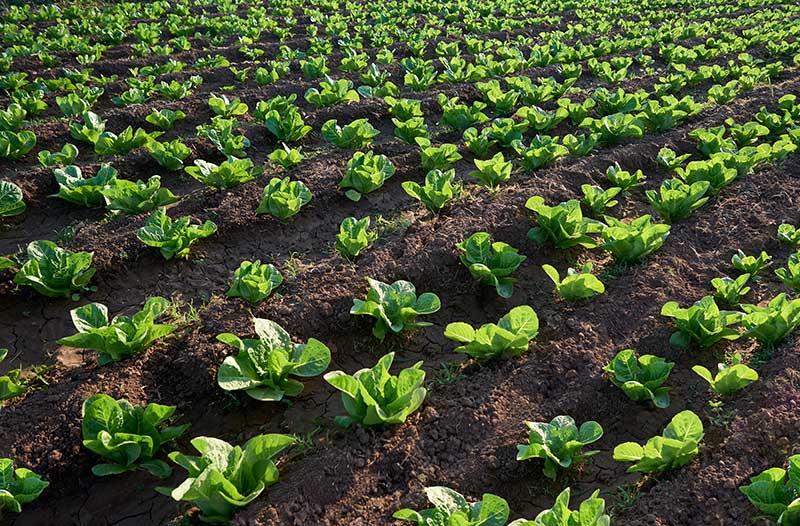In agriculture, various types of manure are used to maintain the soil, including organic fertilizers. So far nothing new but it is important to tell that the use of organic fertilizers is not a miracle cure for the short term. On the contrary, it can better be seen as a rotational fertilizer for the long term.
Annual application ensures that the organic matter content and soil life are maintained. In addition, an organic fertilizer offers a complete package of nutritional elements that are not all released at once. The various nutritional elements do their work at different times.
The slow-release principle of organic fertilizers
The different nutrients or nutrients from organic fertilizers are released at different times and will not become available to the soil and plant at once. The release of the nutrients works via the so-called ‘slow-release’ principle. Check out how this works per nutrient and when the release takes place:
- Nitrogen: 60% of nitrogen is released during the growing season. 40% of the nitrogen is fixed in the organic matter and follows later.
> Read more about the release of nitrogen - Phosphate: 33% of the availability of phosphate increases and is quickly fixed in the soil.
- Potassium: <90% of the potassium is quickly made available to the plant.
- Calcium: 60% of the calcium is released within the first 3 months.
- Magnesium: 100% of the magnesium is released within the first 3 months.
- Trace elements: these work in combination with other elements. They are drivers of many processes in the soil and are picked up by the crop with every application.
- Organic matter: regular supply of organic matter ensures optimal stimulation of the process of mineralization in the soil. Soil life can remain alive because there is a continuously flow of nutrients. This creates a stable process in the soil in which nutrients can be released during the growth of the crops.
“Observations in the field showed us that the crop remains vital for a longer period of time (especially later in the growing season) because the foliage stays green longer.”
(based on crop observations in the cultivation of potatoes).




